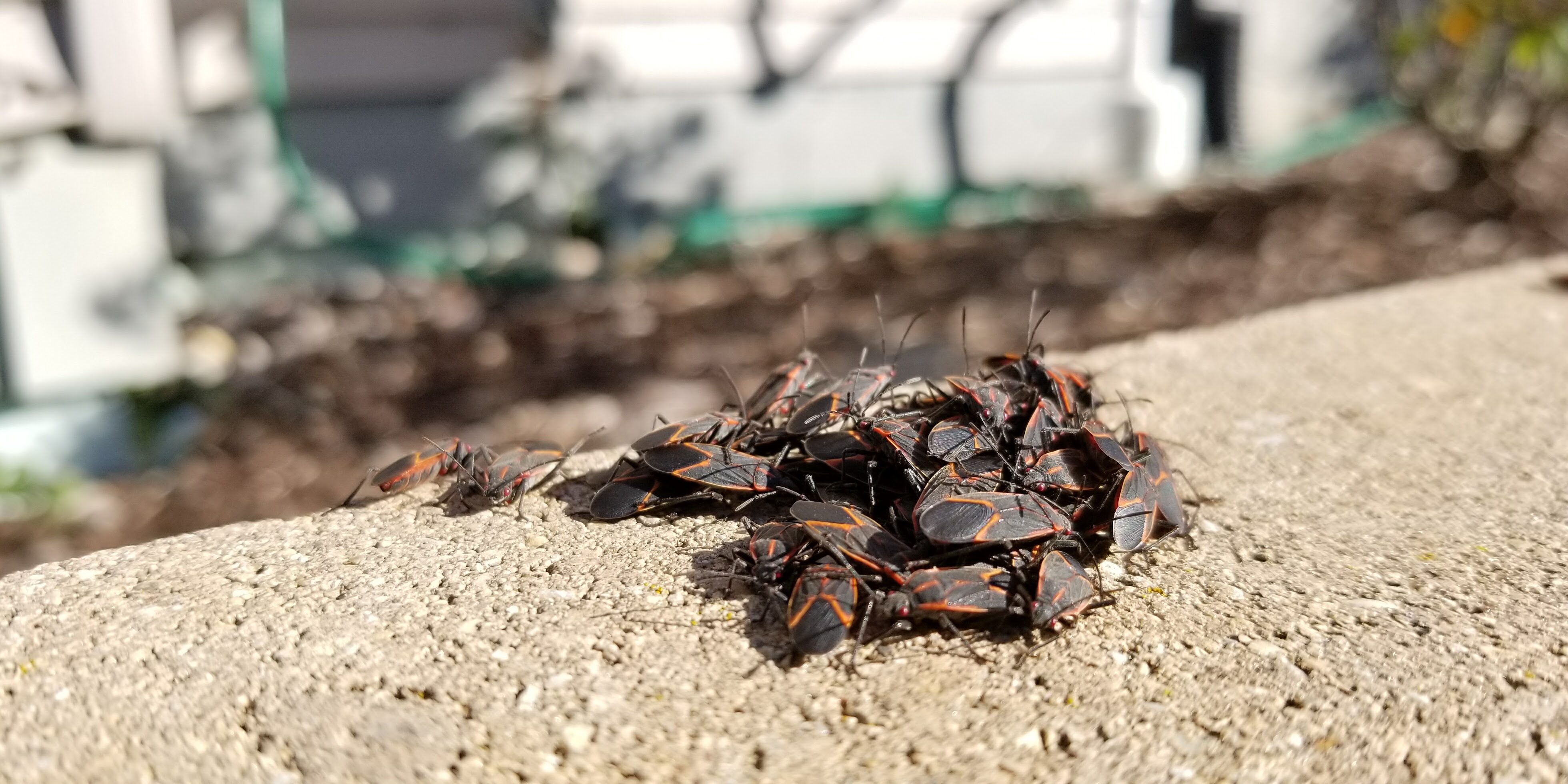
Quick Course "WHAT'S BUGGING YOU?"
Boxelder Bugs!
By: Rebecca Hoffman*, UW-Entomology and Phil Pellitteri, UW Insect
Diagnostic Lab
Boxelder bugs, a true bug from the insect family Rhopalidae, are commonly found both outside and inside homes during the fall through early spring. Boxelder bugs are about 3⁄4 of an inch long, and black in color with three red lines on the thorax and red lines on the wing margins. During the summer, they feed on leaves, flowers, and seedpods of boxelders and silver maples, where they do minor damage to the trees.
Although reasonably harmless to humans, these bugs can be a nuisance and occasionally their waste can stain exterior siding as well as interior curtains and furniture. The massive build up of dead carcasses inside walls and attics can cause allergenic reactions in some people.
Life cycle: Adult boxelder bugs lay eggs on trees in the spring. Nymphs emerge in 11 to 14 days and begin feeding on trees. Nymphs resemble adults, but are smaller and have more red on their bodies. Nymphs develop into adults during the summer and lay eggs of the second generation of boxelder bugs that are active in August and September. Boxelder bugs become a nuisance when second-generation bugs congregate on the outsides of homes on sunny days in September and October. Boxelder bugs then move indoors to find a protected place to overwinter. They remain in attics and wall voids until the spring when the bugs move back outdoors. Although boxelder bugs do not breed indoors, some may be active on sunny days in the winter. Populations of boxelder bugs are highest after dry spells. Wet weather promotes a fungal disease that is important for natural population control.
Brent Towle: Master Technician and owner of Spectrum Pest Control has developed an exclusive protocol for controlling Box Elder Bugs all Summer and Winter long. Timing is everything!
“Prevention is the name of the game”
We start by identifying the severity of the current problem and establish a plan of attack. If our first visit is in the spring, we need to suppress the interior problem while at the same time treating the exterior to prevent those exiting structure to sun themselves and then reenter in the evening. The more we control in the spring, the more we keep from breeding and having to do battle within the late summer early fall. A preventive service needs to be done before the temp's drop in the fall. Most locations require a treatment between last week of August to the middle of September.
Due to this year's late spring and wet summer, they will be showing up late. September Late October service will work well.
Our products will protect the structure for 120 days!
Lady Beetles, Wasp, Spiders, Cluster Flies, and Ants will also be controlled with this service combination.
Box Elder Bugs are more active in the Pleasant Prairie, Bristol, Trevor, Wilmot, Paddock Lake, Salem, Somers, and Twin Lakes than they will be in the city of Kenosha or Racine. This is due to the higher density of box elder trees in outlying communities.
